Bisexuality vs Pansexuality: the war within the LGBTQ+ community, explained.
| Updated on
UPDATE: Dictionary.com, Vocabulary.com, and Oxford Learner’s Dictionary have updated their outdated definitions of “bisexuality”. Thank you for helping make change happen!
The bisexual and pansexual online communities appear to be at war with each other.
And it’s painful to watch, to say the least. Insults are hurled around as people from both camps call each other’s sexuality exclusive, transphobic, harmful, fake.
In fact, the discourse has turned so aggressive that Instagram had to ban the #pansexual hashtag altogether.
But why is this happening? How did members of the LGBTQ+ community — a community that’s all about diversity — end up attacking each other with such vehemence?
As absurd as it sounds, it all points back to a misnomer.
What are they arguing about?
To be fair, only a tiny group of the bisexual and pansexual communities are engaging in this war of words. The rest of the community are peace-loving, and are probably too busy fending off inequality.

But these online armies are persistent, and their arguments go beyond the distasteful and into the realms of erasure and hate. Let’s take a look at the arguments.
Arguments against bisexuality
The arguments largely revolve around one issue: that bisexuality is the attraction to only men and women, and excludes gender diverse people (e.g., non-binary folks) and trans folks.
Arguments against pansexuality
There are 4 broad categories of arguments that some bisexual folks have against the pansexual identity:
- Pansexuality is the attraction to objects, and not a real sexual orientation.
- Bisexuality is exactly the same as pansexuality, so pansexuality is completely unnecessary.
- Pansexuality was created based on misconceptions.
- Pansexuality’s existence is harmful to bisexual folks.
Here’s the tea: all of those arguments are wrong
Fortunately, all of the arguments above are false. And they can be addressed and taken apart by looking at history and engaging in logical thinking.
So buckle up, open your minds, and let’s smash those misconceptions one by one.

The history of the term “bisexual”
1800s: Before “bisexual” was a sexual orientation
In the 1800s, the term “bisexual” was used in biology to describe organisms with both male and female sexual organs. In this context, the word literally meant “to have two sexes”.
Flowers, for instance, are called bisexual (even till date) when they have both the stamen and ovary. This initial meaning of the word has (quite obviously) no relation to its later use as a description of sexual attraction.

1900s: “Bisexual” as the attraction to men and women
The 1900s saw the introduction of the term “bisexual” as a sexual orientation, to describe people attracted to 2 sexes: men and women.
And before you lament its exclusion of gender-diverse people, please bear in mind that this was a time when “deviance” from heterosexuality was punishable by law in many countries. Homosexuality was only removed as a mental disorder in 1973, and gender diversity was not heavily explored or appreciated until the last parts of the 1900s. The whole freaking world was gender-exclusive back then [edit].
Edit:
Many indigenous cultures have embraced more complex gender structures than the European-influenced gender binary. Global colonisation and the spread of European-centric ideology have led to the suppression of these ideas in modern Western and Western-influenced worlds.
1990: “Bisexual” as a gender-inclusive orientation
In 1990, the Bay Area Bisexual Network in the United States began publishing one of America’s first bisexual publications, Anything That Moves. In it, the authors wrote “The Bisexual Manifesto”, which addressed many misconceptions that people have about the community.
While the authors probably didn’t intend to write what many today refer to as the “bible” of bisexuality [Note 1], this manifesto shed light on the evolved notions of sex and gender diversity. The manifesto, among other things, denounced the idea that gender and bisexuality are binary in nature.
This shows that the bisexual community has, since at least the 1990s, embraced gender diversity. The term “bisexual” has evolved into its modern, gender-inclusive form. As members of the bisexual community will now tell you, bisexuality stopped being about the attraction to men and women, and now refers to the attraction to 2 or more genders — including genders that lie beyond the binary.

But this gender-inclusive definition didn’t seem to gain traction outside the bisexual community. Because language is a tricky little thing.
Note 1:
It’s important to note that the “Bisexual manifesto” is perhaps more accurately described as the manifesto of the Anything That Moves magazine. In the manifesto, you’ll notice that the authors were describing what their magazine sets out to achieve for the bisexual community, rather than describing or defining what the bisexual community is. Specifically, the authors asked readers to “not assume that the opinions expressed are shared by all bisexuals, by those actively involved in the Bisexual Movement, or by the ATM staff”. As important and timeless as this piece of writing is, we should all exercise extreme caution before holding on to a single written work as the definitive source of truth for an entire community.
It’s time we talked about that “bi” prefix
In English, the “bi” prefix means “two”, and is used in words relating to the number two.
It’s pretty straightforward: bicycles have 2 wheels, binoculars have 2 eyepieces, a bilingual person understands 2 languages, biweekly means once every 2 weeks (or 2 times a week), and so on.
So when it comes to sexual orientations, it seems almost natural for anyone to think that bisexual folks are attracted to people of 2 genders or sexes: men and women.
Except — as we now know — they’ll be wrong.
Even though the term’s meaning has changed more than 30 years ago, many are still stuck with the pre-90s notion due to the English naming convention of the “bi” prefix. Heck, even the Oxford dictionary got confused by that and stuck with that outdated definition.
“Bisexual” is now a misnomer; it simply doesn’t mean what its name implies [Note 2]. And that’s the reason why so many people — without harbouring any bad intention — assume that bisexuality isn’t gender-inclusive. More on this later.
Note 2:
A misnomer is a word that appears to mean something, but in reality means something different. “Greenland” is a misnomer, because it suggests green pastures, but is in fact pretty much covered in ice now. “Strawberry” is another misnomer, because — believe it or not — it isn’t a berry.
Let’s review the arguments against the “bisexual” label
The bulk of criticisms against the “bisexual” label stems from its alleged gender-exclusive definition. But as we’ve learned from history, this definition is outdated and no longer commonly accepted by the bisexual community.
Was the “bisexual” term once exclusive? Sure. But let’s not forget that the whole world was, too. The bisexual community has shown us that they’re able to learn about and embrace gender diversity — way before gender diversity became mainstream.
It’s now up to us to learn and catch up with them.
Side note:
If you still feel uncomfortable with the etymology of the word “bisexual”, you might want to consider how terms such as “homosexual” (attraction to same-gender) and “heterosexual” (attraction to opposite-gender) are also heavily grounded in the notion of gender binary. Gender and sexuality are complex topics, and it shouldn’t surprise us that our understanding and definitions change as we gain more knowledge.

The history of the term “pansexual”
Early 1900s: Before “pansexual” was a sexual orientation
In the early 1900s, the term “pansexualism” was used in psychology to describe the theory that human activities are mostly driven by sex (we’d have to thank Sigmund Freud for that). The “pan” prefix means “all”, so in this context, “pansexualism” referred to the idea that “all is driven by sex”.
Similar to “bisexual”, this initial meaning to “pansexual” has no relation to its later use as a description of sexual attraction.
1970s and beyond: “Pansexual” as an attraction to all genders
In the 1970s, the idea of pansexuality as a sexual orientation started to gain adoption. It’s used to describe folks who are attracted to people of all genders.
In some areas of America, the term “pansexual” was separately used to describe a person’s willingness to try all sorts of sexual experiences, though this definition didn’t gain widespread adoption.
Pansexuality as a sexual orientation surged in adoption in the internet era. In particular, it gained prominence when celebrities such as Miley Cyrus and Janelle Monáe publicly identified with that orientation.
Let’s review the arguments against the “pansexual” label
1: Pansexuality is the attraction to objects, and not a real sexual orientation.

This argument is bewildering.
It’s unclear what this idea is based on, but it’s possible that it came from a (very) loose misinterpretation of “pansexualism” in early 1900s psychology. Which — as we know — is completely unrelated to sexual orientations.
Just like how bisexuality as a sexual orientation has no relation to “bisexuality” in biology, pansexuality as an orientation has no relation to “pansexualism” in early 1900s psychology.
This shouldn’t blow your mind, but it’s common for the same word to have different meanings in different contexts. An “unqualified opinion”, for example, when used in everyday speech, typically implies that what someone has said is not trustworthy. But in the context of an audited financial report, an unqualified opinion means that the financial statements are fair and can be trusted.
2: Bisexuality is exactly the same as pansexuality, so pansexuality is unnecessary.
Bisexuality is the attraction to 2 or more genders, while pansexuality is the attraction to all genders. Both are similar, but different.
To understand this, think about squares and rectangles. Squares are special rectangles that have all equal sides. All squares are technically rectangles, but not all rectangles are squares.

The same applies to bisexuality and pansexuality. All pansexual folks can be classified as bisexual (being attracted to “all” fits into the description of “2 or more”), but not all bisexual folks are pansexual (not all bisexual folks are attracted to all genders).
Insisting that bi and pan are identical is just like saying that all rectangles are squares: very few people will take you seriously.
3: Pansexuality was created based on misconceptions.
This is a little trickier to unpack.
There’s an overlap in timelines between the emergence of pansexuality and the inclusive definition of bisexuality. Between the 1970s and 1990s, it’s difficult to ascertain whether bisexuality was still defined in exclusive terms, or whether pansexuality was built off an outdated definition.
Let’s also bear in mind that the internet (or more accurately, the world wide web) was only available to people from the 1990s onwards. This meant that ideas, definitions, and discourse all couldn’t happen nearly as quickly and widely as it could today.
All of these is to say: it’s hard to determine whether pansexuality was really created in response to the alleged gender-exclusiveness of bisexuality.
But perhaps that doesn’t really matter anymore. The real difference between pansexuality and bisexuality isn’t about their gender-inclusiveness, but rather about the attraction to “all” or “2 or more” genders.
4: Pansexuality’s existence is harmful to bisexual folks.
The argument here is that pansexuality’s existence — specifically, how they include all genders — compounds misconceptions about bisexuality’s inclusiveness.
Here’s the thing though: if we want to solve a problem, we should look at its roots and address them.

To be accurate, it’s really the misunderstanding of bisexuality that is harmful to bisexual folks. The emergence of gender-inclusive orientations isn’t the cause of the misunderstanding, but its side effect.
As long as the root issues are left untouched, the problem will recur. Attacking the existence of other labels might be easier than addressing the root problems, but it wouldn’t achieve much beyond seeding hate and further misunderstandings.
The root of misunderstanding comes largely from 2 areas. First, the “bi” prefix, which means “two” in English, makes many people form an intuitive but wrong interpretation of the word “bisexual”. This misunderstanding is then confirmed by many dictionaries, which still define bisexuality as the attraction to 2 sexes.
While it’s impossible to change the English language’s use of the “bi” prefix, there’s much we can do with how “bisexual” is defined.
The path ahead
“Hate begets hate; violence begets violence; toughness begets a greater toughness. We must meet the forces of hate with the power of love.”
– Martin Luther King, 1958
Folks from the bisexual community who try to explain the inclusiveness of their identity with aggression and contempt end up acting in an exclusionary manner — the very thing they’re claiming to be against.
Likewise, folks from the pansexual community who refuse to acknowledge the changed definition of “bisexuality” end up acting in the same manner that gender-exclusive people do, holding on to outdated notions even in the face of new evidence.

The frustration that members of both communities feel is real, but the solution that some of them have adopted is painfully ironic. What’s worse, people outside the LGBTQ+ community would have gained no new understanding or empathy towards the community.
We need to move forward, and we need to do it together.
Let’s take a leaf from October
[H/T to Bisexual Dragons for this amazing analogy]
Ever wondered why October has the “octo” prefix, which means “eight”, even though it’s the 10th month of the year? Well, because it was the 8th month of the Roman calendar before 46 BC.
When January and February were added to the calendar, October’s name was retained even as it became the 10th month. And here’s the thing: nobody bats an eye about October’s “octo” prefix anymore.
October’s existence as the 10th month is proof that people’s perceptions about words can change. We just need to make its understanding mainstream.
Let’s make that happen
Remember how all those online dictionaries still describe bisexuality with an outdated definition? Let’s fix that.
We’ve prepared a message below that you can send to the various online dictionaries, to appeal to them to update the definitions of “bisexual” and “bisexuality”.
Cambridge dictionary
Existing definition
“Sexually attracted to both men and women”
Request an updated definition:
- Go to their help page.
- Click on the “contact us” link in the first paragraph on the page. This should open a modal window.
- Fill in your name, email, and message.
Click to see a sample message
Select all text
Hi there, I’m writing in about the definitions of “bisexual” and “bisexuality” on your dictionary, which I believe are outdated. I hope that you can look into this and give their definitions an update.
The concept of bisexuality as a sexual orientation came about from the 1920s (source: https://www.etymonline.com/word/bisexual and https://muse.jhu.edu/article/575374), and was initially defined as the attraction to men and women. That was an era when gender diversity and the existence of non-binary genders was not widely accepted or appreciated, which explains why the definition only considered 2 sexes. This understanding has now changed.
Since at least the 1990s, the bisexual community has made it clear that their identity includes the attraction to people who lie beyond the gender binary. In the 1990 “Bisexual Manifesto”, the bisexual community explained that gender is not binary, and bisexuality isn’t either (source: https://muse.jhu.edu/article/575374). In recent years, many bisexual activists have also clarified that their identity isn’t tied to the gender binary. The widely accepted modern definition of bisexuality is “the attraction to 2 or more genders (or more than 1 gender)”. It is no longer defined as the attraction to men and women.
The Human Rights Campaign (https://www.hrc.org/resources/bisexual-faq), Merriam-Webster Dictionary (https://www.merriam-webster.com/dictionary/bisexual), and The Trevor Project (https://www.thetrevorproject.org/trvr_support_center/bisexual/) have all adopted the modern definition of bisexuality and moved away from its outdated binary definition. I hope that your dictionary can also do the same, and update its definitions of both “bisexual” and “bisexuality”.
Thank you.
Dictionary.com [ ✅ updated thanks to you! ]
Old definition
“Noting or relating to a person who is … attracted to both men and women, or to people of various gender identities.”
New definition
“Noting or relating to a person who is sexually or romantically attracted to people of two or more genders.”
Select all text
Hi there, I’m writing in about the definitions of “bisexual” and “bisexuality” on your dictionary, which I believe are outdated. I hope that you can look into this and give their definitions an update.
The concept of bisexuality as a sexual orientation came about from the 1920s (source: https://www.etymonline.com/word/bisexual and https://muse.jhu.edu/article/575374), and was initially defined as the attraction to men and women. That was an era when gender diversity and the existence of non-binary genders was not widely accepted or appreciated, which explains why the definition only considered 2 sexes. This understanding has now changed.
Since at least the 1990s, the bisexual community has made it clear that their identity includes the attraction to people who lie beyond the gender binary. In the 1990 “Bisexual Manifesto”, the bisexual community explained that gender is not binary, and bisexuality isn’t either (source: https://muse.jhu.edu/article/575374). In recent years, many bisexual activists have also clarified that their identity isn’t tied to the gender binary. The widely accepted modern definition of bisexuality is “the attraction to 2 or more genders (or more than 1 gender)”. It is no longer defined as the attraction to men and women.
The Human Rights Campaign (https://www.hrc.org/resources/bisexual-faq), Merriam-Webster Dictionary (https://www.merriam-webster.com/dictionary/bisexual), and The Trevor Project (https://www.thetrevorproject.org/trvr_support_center/bisexual/) have all adopted the modern definition of bisexuality and moved away from its outdated binary definition. I hope that your dictionary can also do the same, and update its definitions of both “bisexual” and “bisexuality”.
Thank you.
Vocabulary.com [ ✅ updated thanks to you! ]
Old definition
“Sexually attracted to both sexes”
New definition
“Sexually attracted to more than one gender”
Select all text
Hi there, I’m writing in about the definitions of “bisexual” and “bisexuality” on your dictionary, which I believe are outdated. I hope that you can look into this and give their definitions an update.
The concept of bisexuality as a sexual orientation came about from the 1920s (source: https://www.etymonline.com/word/bisexual and https://muse.jhu.edu/article/575374), and was initially defined as the attraction to men and women. That was an era when gender diversity and the existence of non-binary genders was not widely accepted or appreciated, which explains why the definition only considered 2 sexes. This understanding has now changed.
Since at least the 1990s, the bisexual community has made it clear that their identity includes the attraction to people who lie beyond the gender binary. In the 1990 “Bisexual Manifesto”, the bisexual community explained that gender is not binary, and bisexuality isn’t either (source: https://muse.jhu.edu/article/575374). In recent years, many bisexual activists have also clarified that their identity isn’t tied to the gender binary. The widely accepted modern definition of bisexuality is “the attraction to 2 or more genders (or more than 1 gender)”. It is no longer defined as the attraction to men and women.
The Human Rights Campaign (https://www.hrc.org/resources/bisexual-faq), Merriam-Webster Dictionary (https://www.merriam-webster.com/dictionary/bisexual), and The Trevor Project (https://www.thetrevorproject.org/trvr_support_center/bisexual/) have all adopted the modern definition of bisexuality and moved away from its outdated binary definition. I hope that your dictionary can also do the same, and update its definitions of both “bisexual” and “bisexuality”.
Thank you.
Lexico.com
Existing definition
“Sexually attracted not exclusively to people of one particular gender; attracted to both men and women.”
Request an updated definition:
Send an email to support@lexico.zendesk.com, or click here for a pre-drafted email template.
Oxford Learner’s Dictionary [ ✅ updated thanks to you! ]
Old definition
“Sexually attracted to both men and women”
New definition
“Sexually attracted to people of more than one gender”
If you spot a mistake in the post, please leave a comment to let us know!

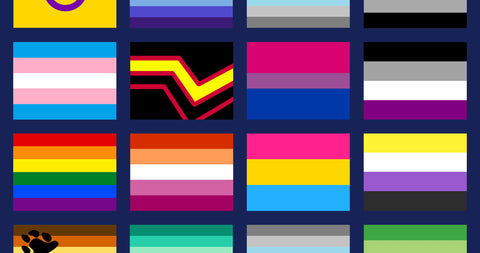
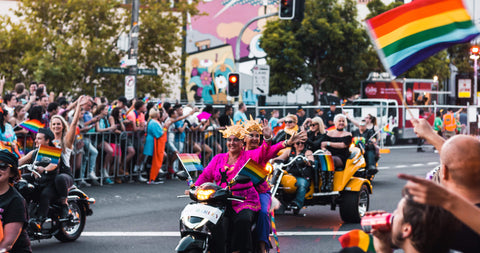
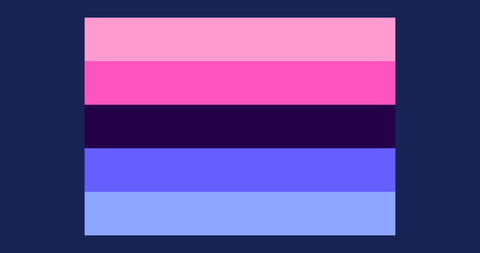

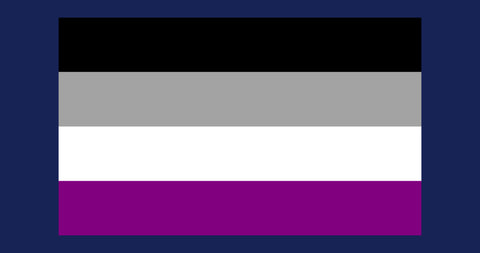
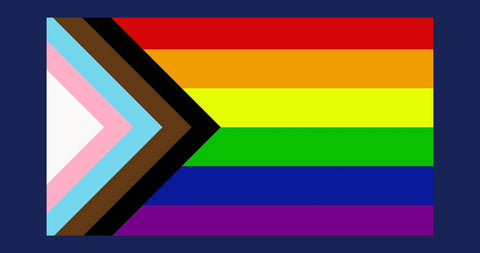
Dictionary.com is already updated FYI